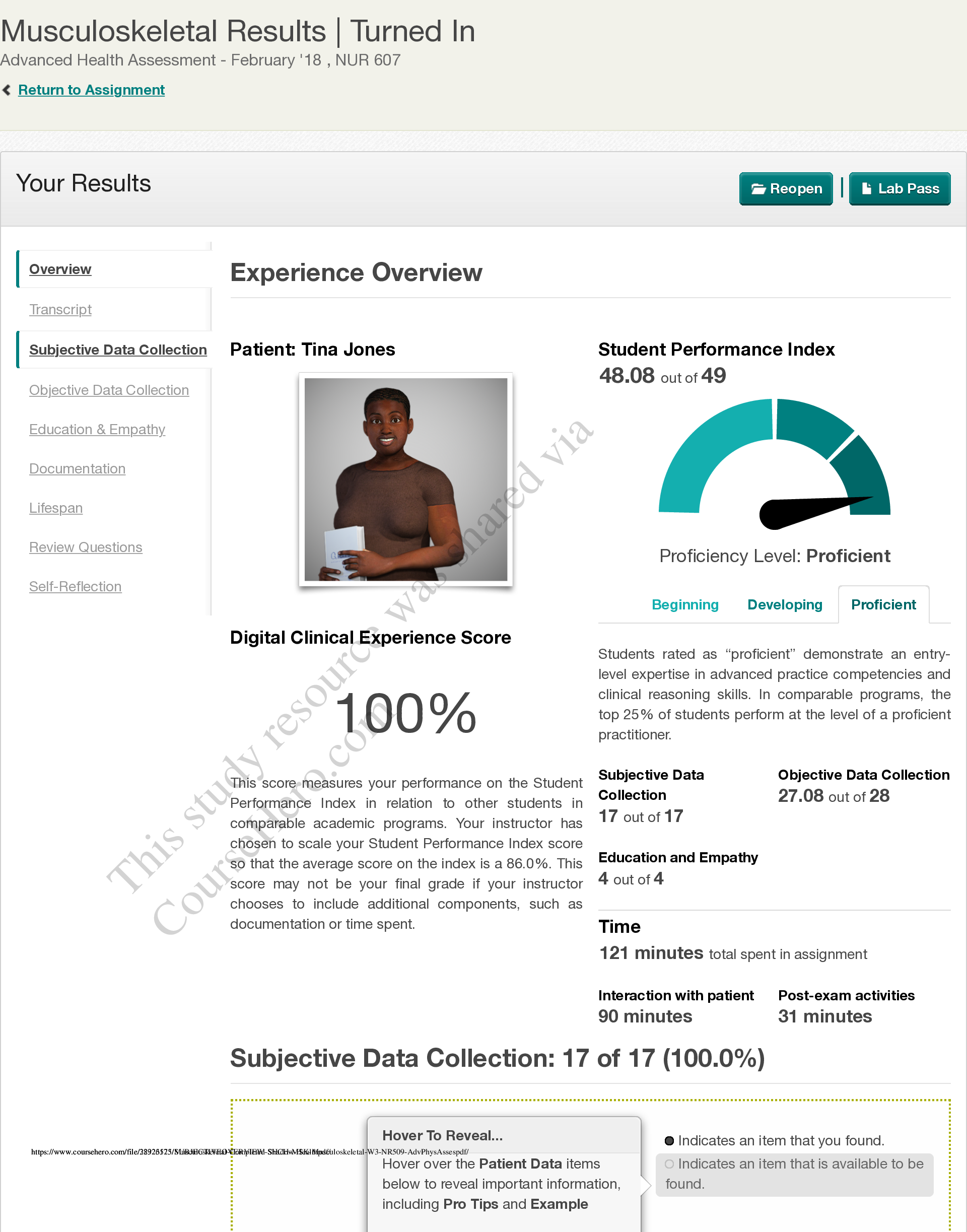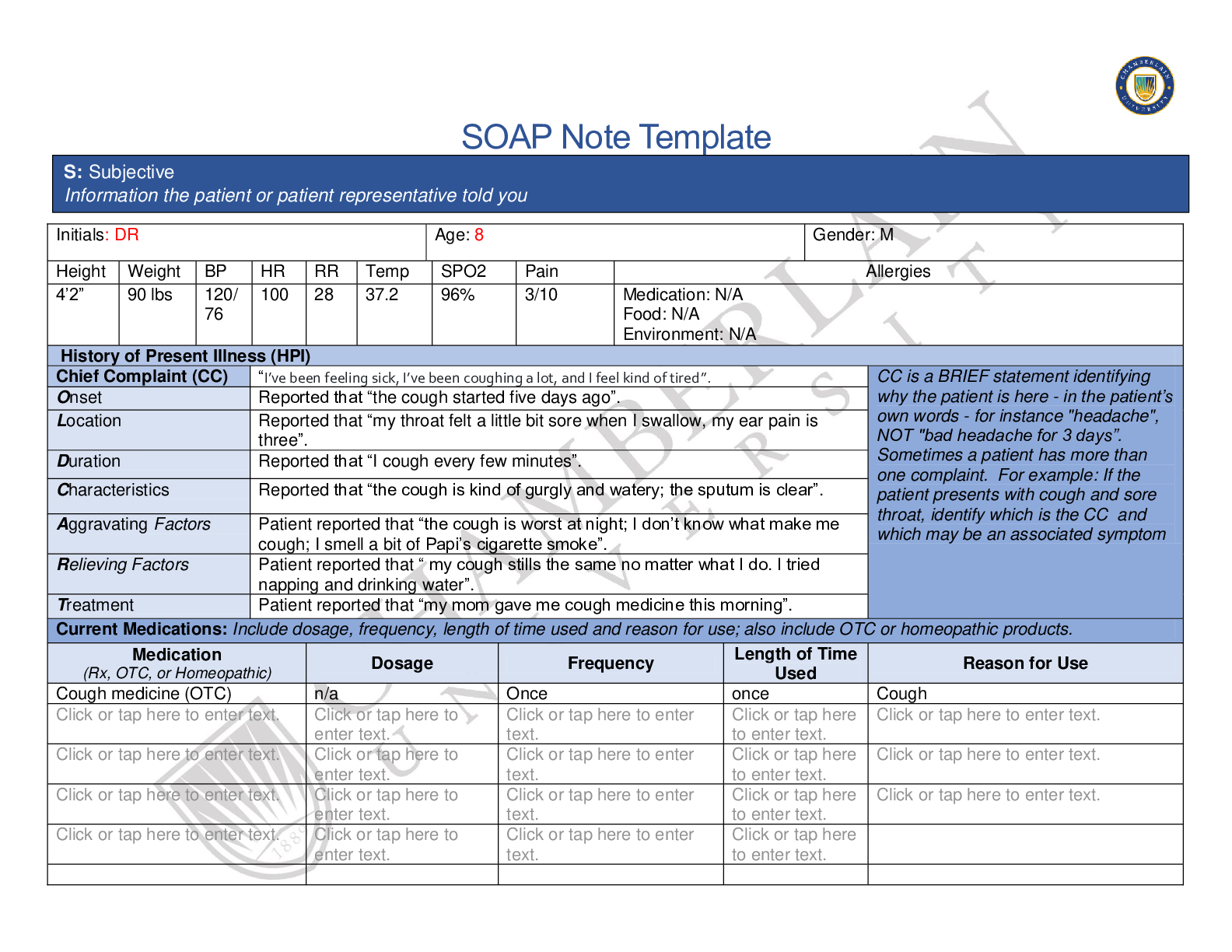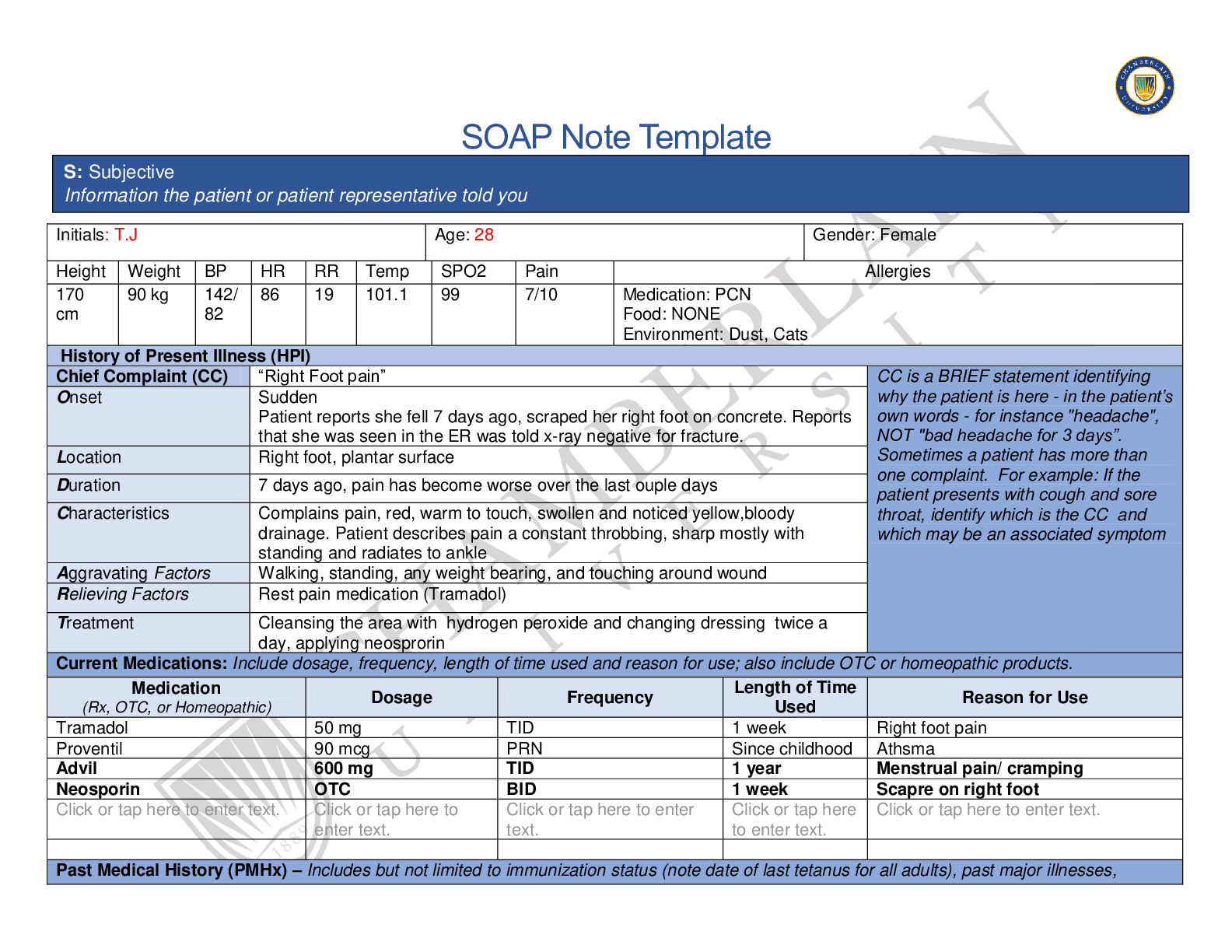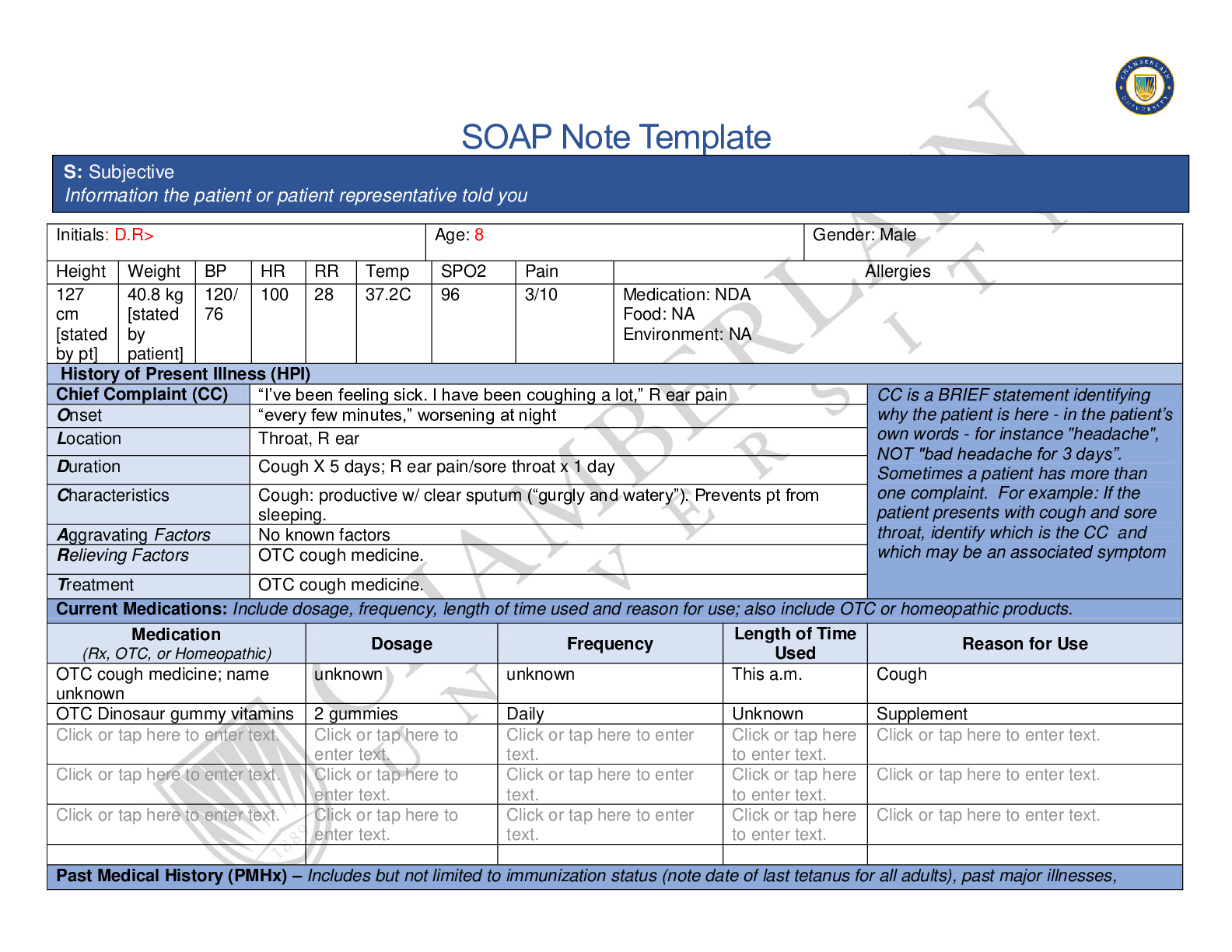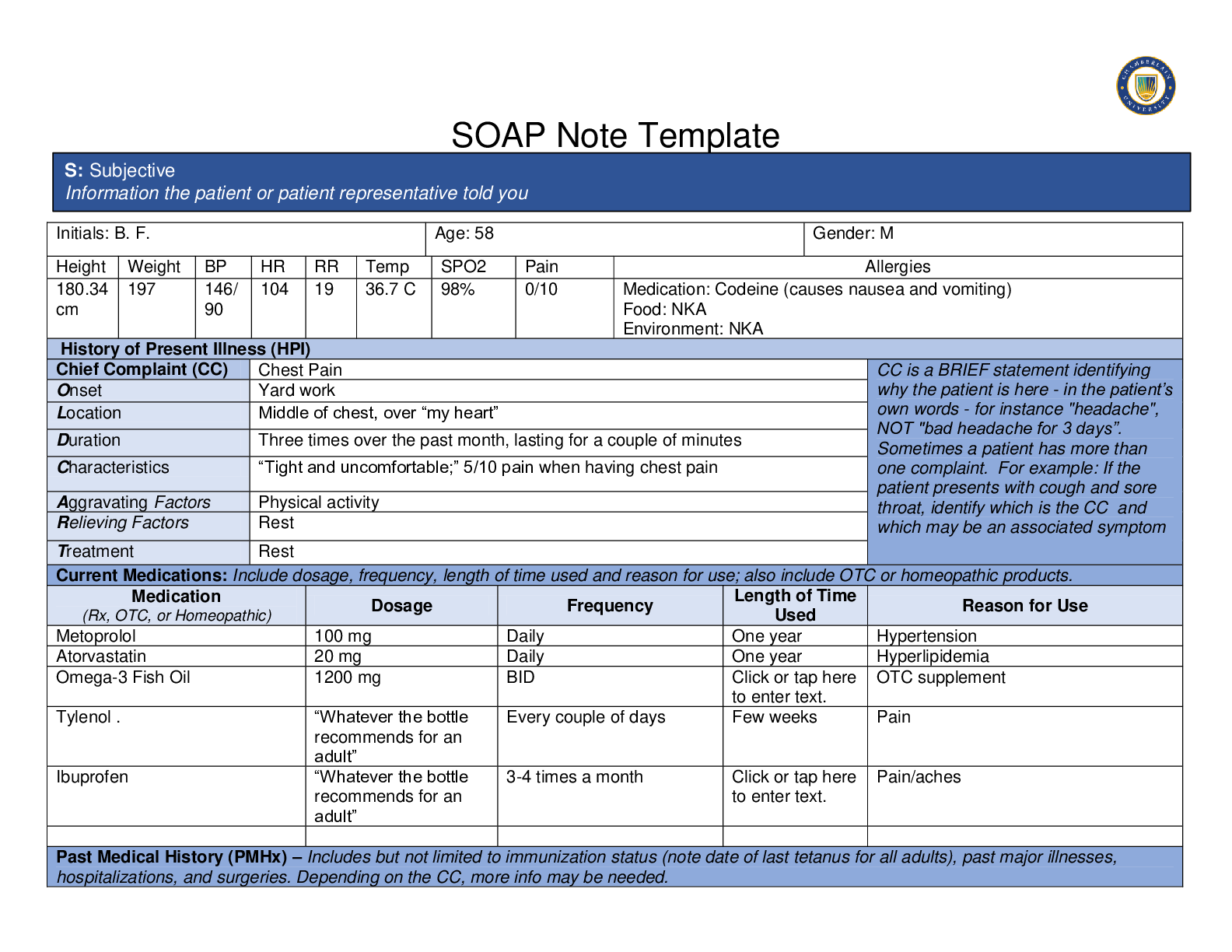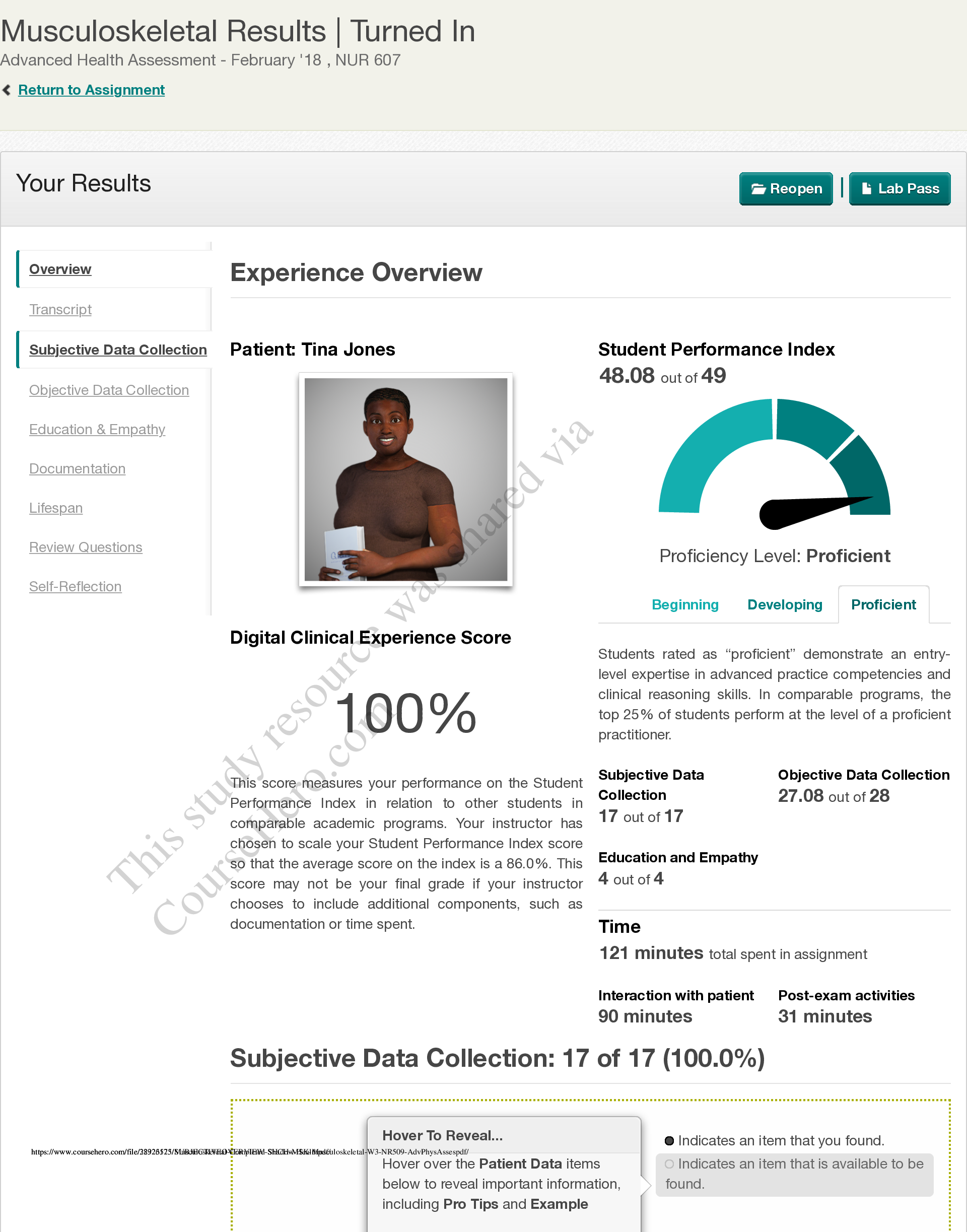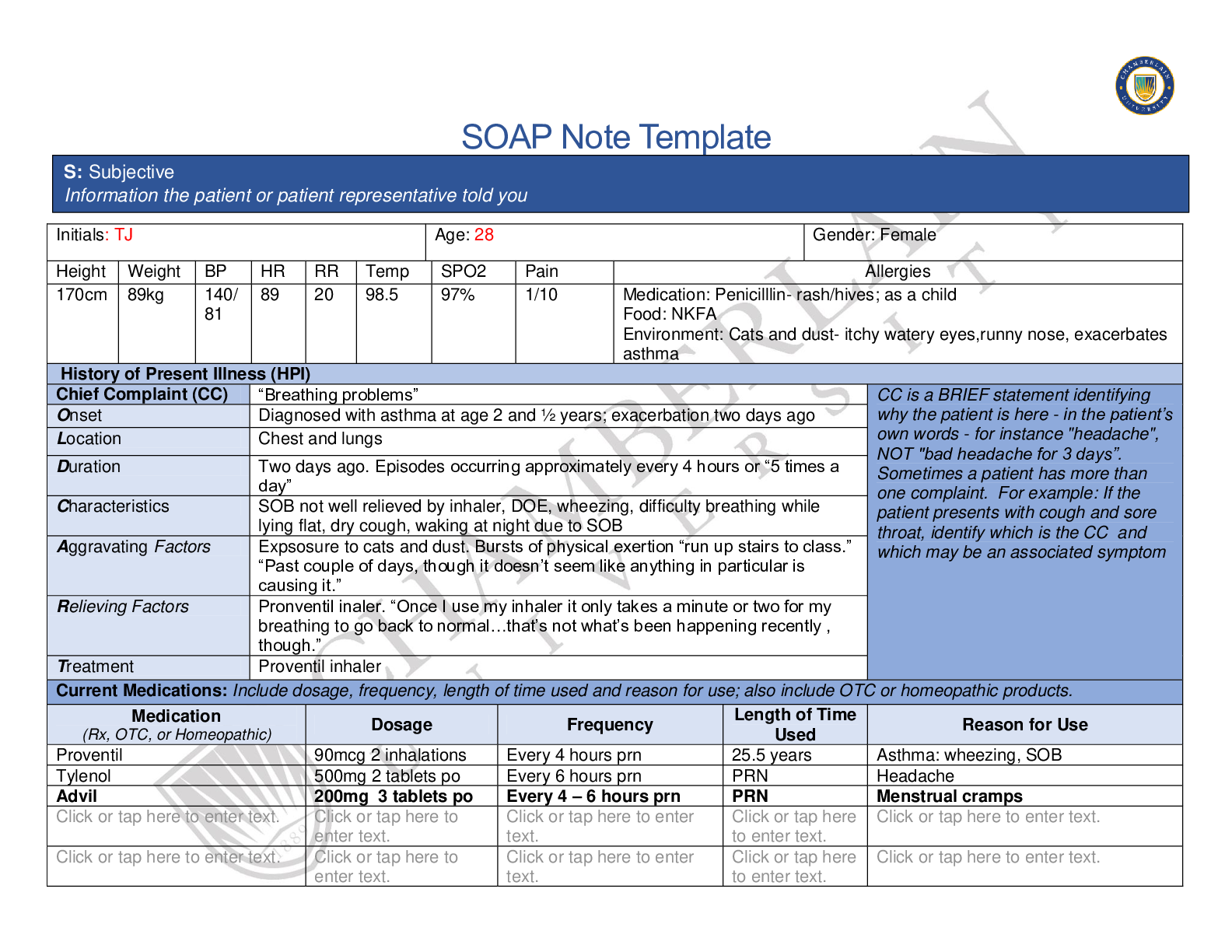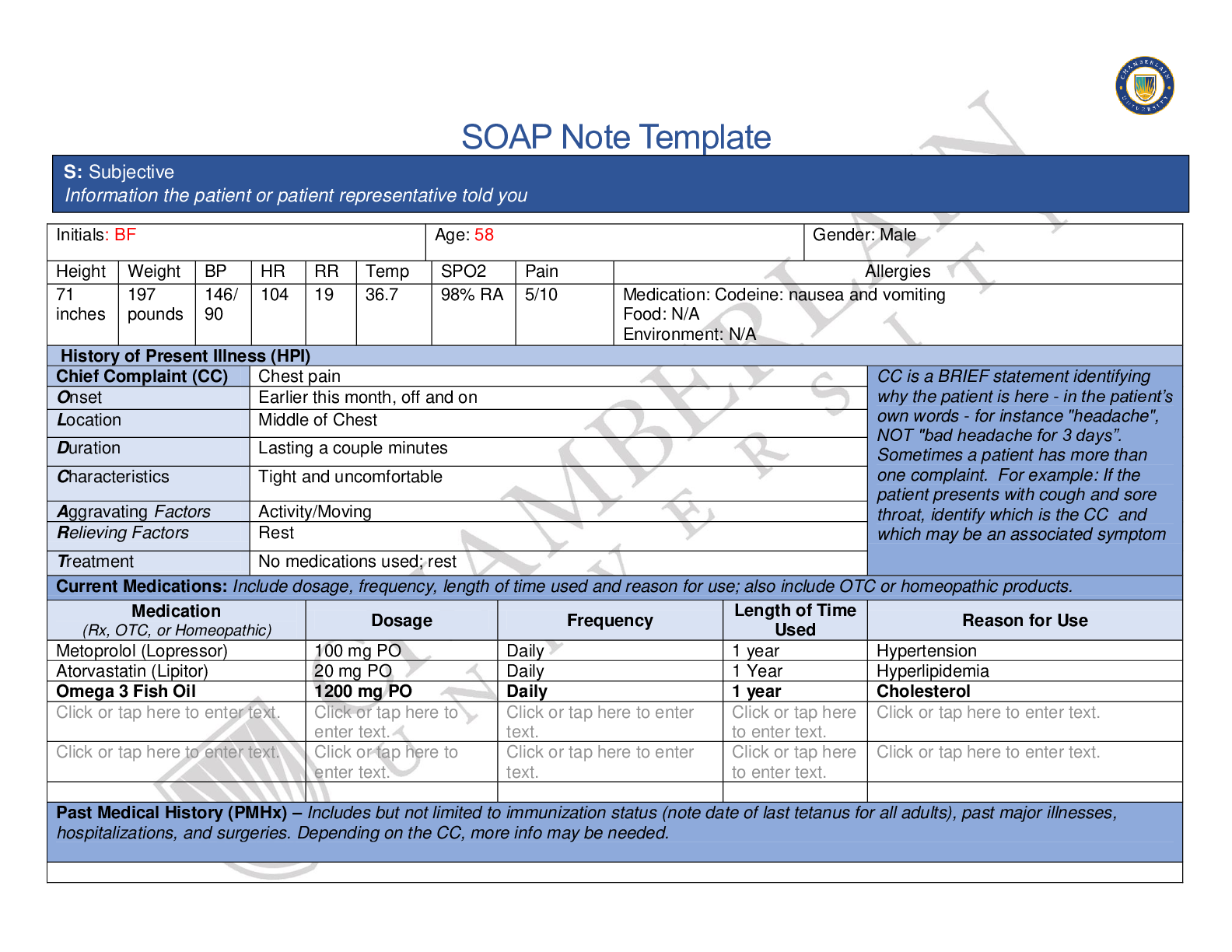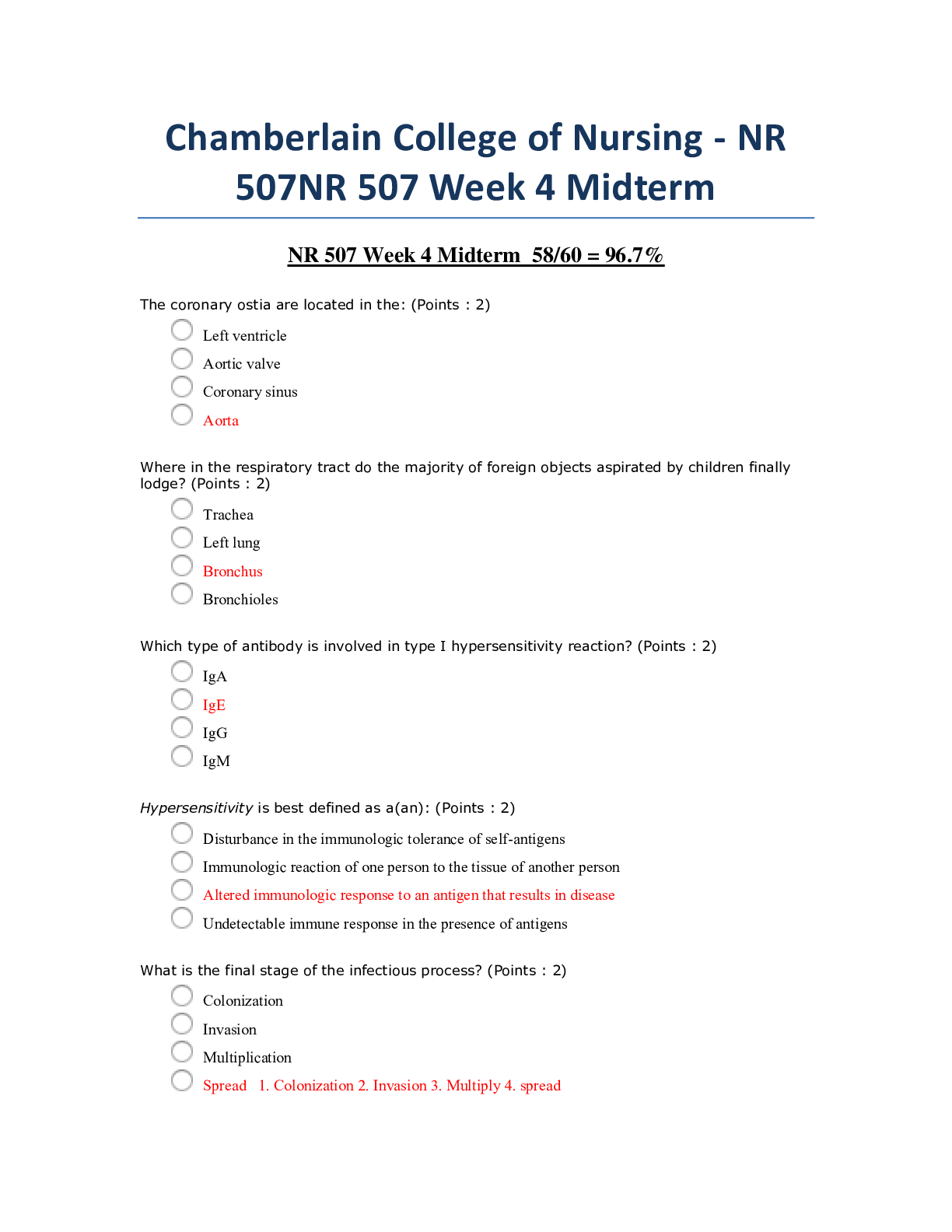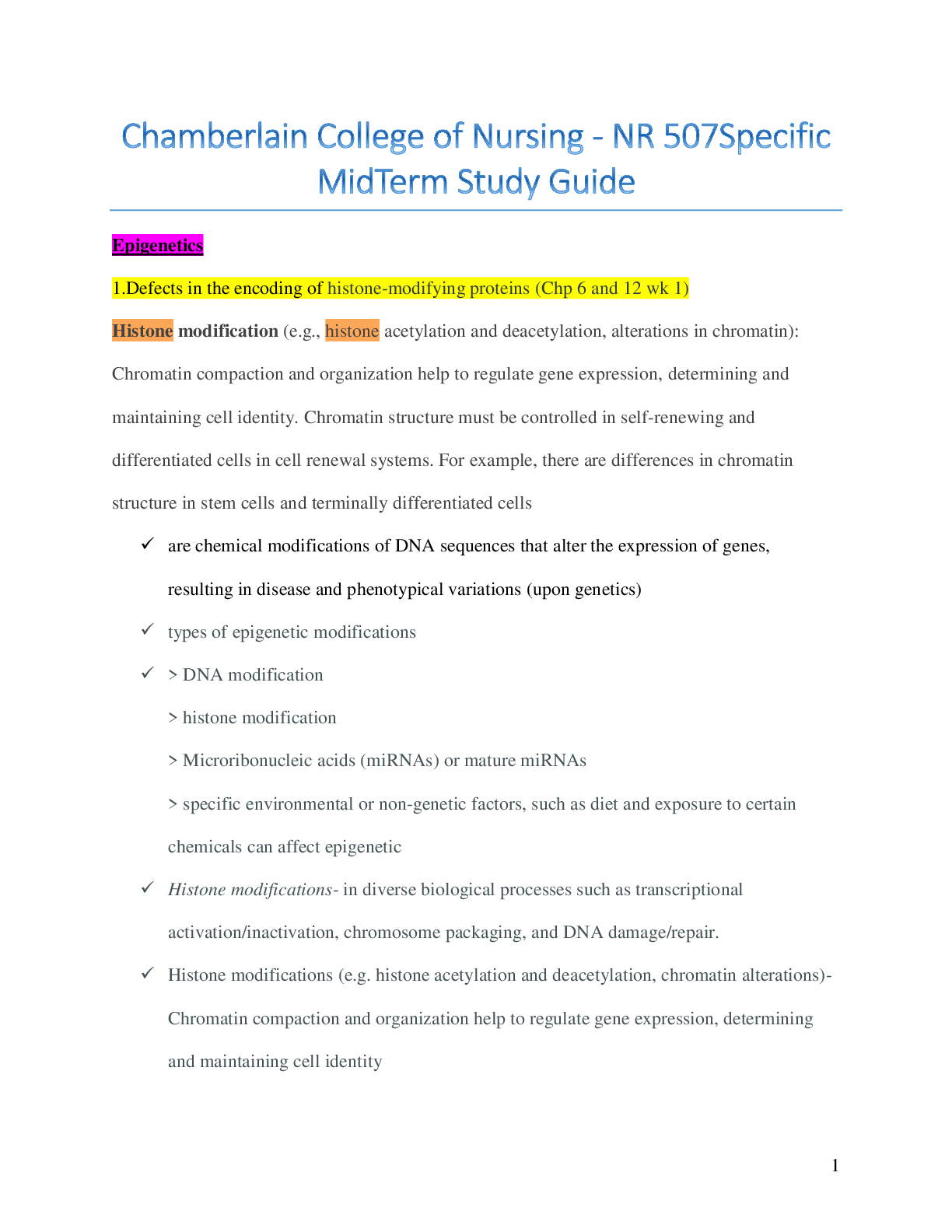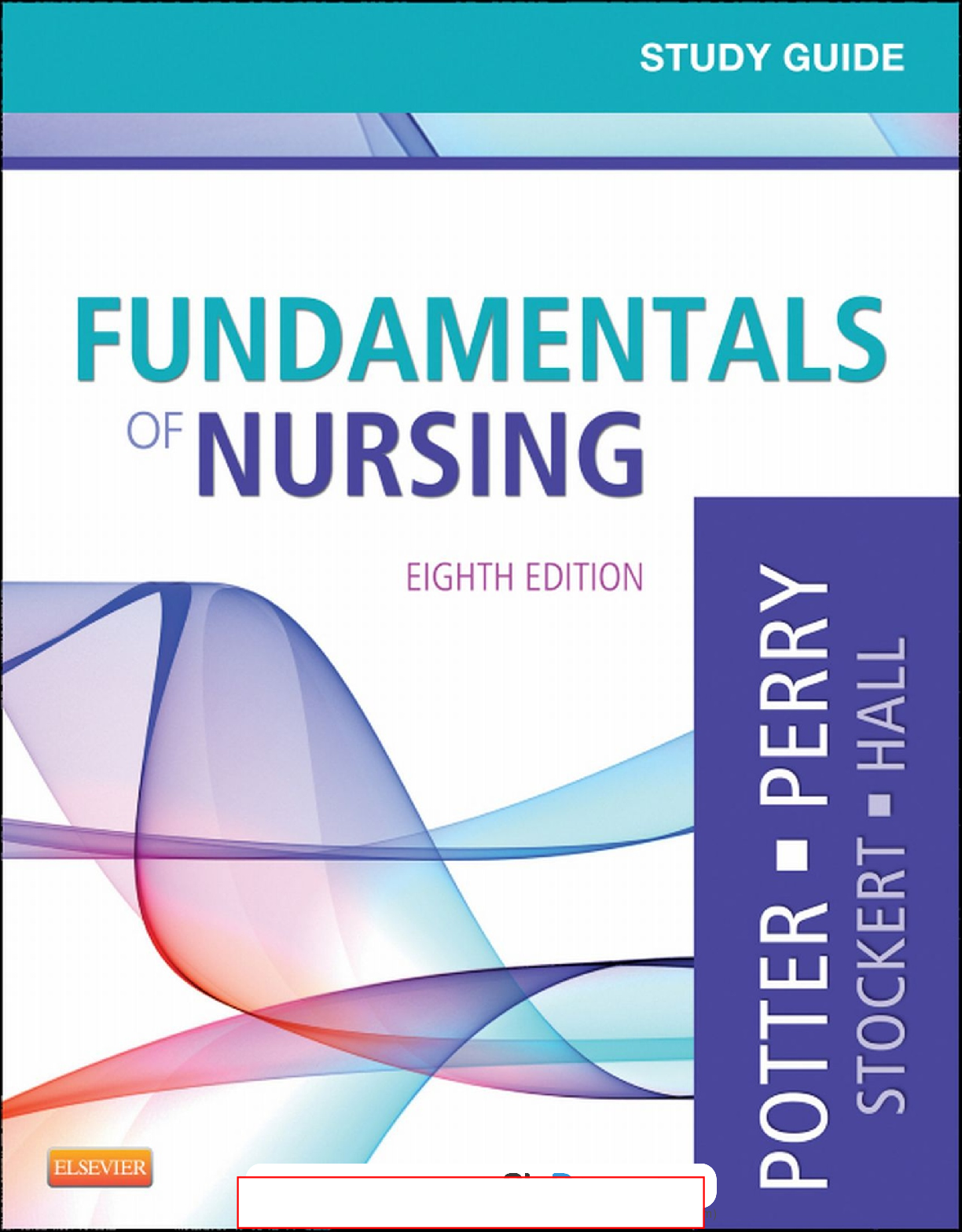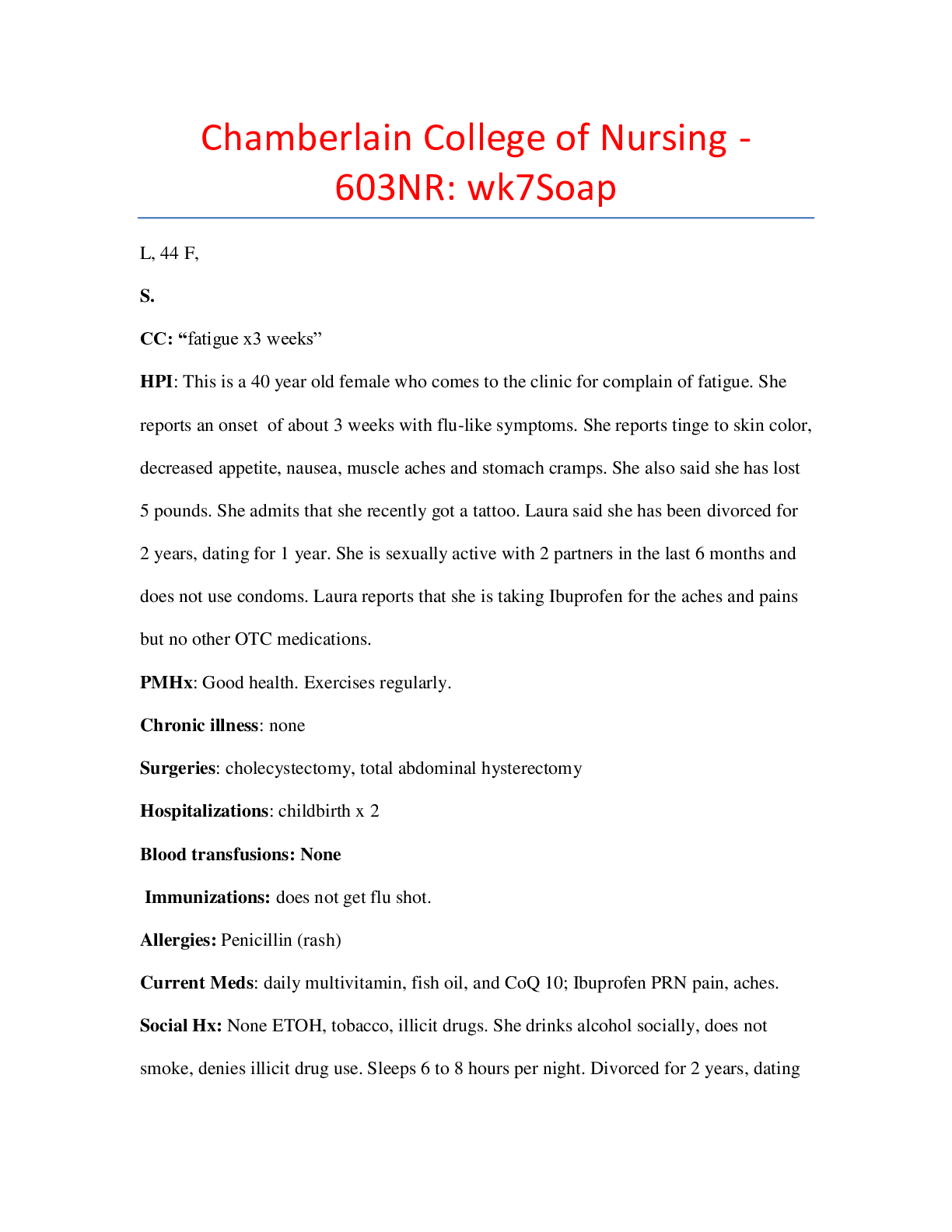*NURSING > QUESTIONS & ANSWERS > Chamberlain College of Nursing - NURSING NR 222H+W exam 2 Study Guide (All)
Chamberlain College of Nursing - NURSING NR 222H+W exam 2 Study Guide
Document Content and Description Below
Chamberlain College of Nursing - NURSING NR 222H+W exam 2 Study Guide Make sure we’re not unconsciously biased Evaluate our own values Therapeutic communication Purposeful use of comm... unication Build+ maintain helping relationships with patients, families, significant others Purpose to our conversation Patient-centered/ planned/ goal directed Factors o Rapport Harmony + affinity between people in relationships o Empathy Understand another’s feeling without losing personal identity + perspective o Trust o Reliance on pt to carry out responsibilities + prmises o Proxemics Personal space Intimate: 0-1.5 ft Personal: 1.5-4 ft Social: 4-12 ft Public: 12 – 25< ft techniques o active listening o sharing o touch o silence o clarifying o reflecting o focus o paraphrase o summarize o humorhealth promotion/ sensitivity to each pt. goals + values goals to have pt adopt health promoting behaviors o info not enough therapeutic effectiveness self-awareness + self-reflection openness self-confidence + strength genuineness concern for individual respect for individual knowledge ability to empathize sensitivity acceptance creativity ability to focus + confront Emotional/ spiritual/ physical care Listening o Shows pt you care o Get info Silence o Nonverbal response Open ended questions Listen/ silence/ touch/ convey acceptance Health people 2020 Improve health literacy o Health promotion requires effective communication o Read, comprehend, + follow through on health info.Values clarification Method discovering 1’s values + importance of these values Own values + biases Helps people recognize what values they hold + evaluate how those values influence their actions Pt values lead to behaviors that conflict with RN value of promoting health o Ethical dilemmas o RN examine conflicting values o Possible outcomes to promote health interventions Steps in self-awareness Listening to oneself o Self-concept Mental picture of self o Self-esteem How people feel about way they see themself o Judgement + attitudes about self Listening to + learning from others o feedback Self-disclosure o Share aspects of self o Disclosure in 1 triggers disclosure in another Practical reflection o Understand 1’s own thoughts + actions to take action in future Need self awareness + clarifications of values o Therapeutic use of self impaired Relationship stages Orientation/ introductory phase/ RN + pt meet o RN structure interaction o Establishing a connection Consistency Sensitive pacing of communication Active listening Conveying concern + warmth Pay attention to comfort + control Working phase o RN + pt work together to promote pt’s health Termination phase o Ending relationship For therapeutic relationships Ethical communication How receiver getting message Treat people with respect Barriers o Sender o Message o Receiver o Anxiety/ attitudes/ noise/ activity/ distance/ language/ beliefs/ touch/ eye contact/ appearance/ emotion/ body language/ gestures/ interruptions/ distractions/ illness/ medications o 90% communication nonverbal o Did they just receive news Effective communication o Listening Reciprocity RN matches nuances of pt style + behavior, pt interpret RN as active listening increase, misinterpretations decrease o Flexibility o Silence o Humor o Touch o space Forms of communication Verbal o Using words/ spoken, written o Vocabulary o Word meaning o Pacingo Intonation o Clarity+brevity o Timing+relevance Non-verbal o Messages not spoken, written o Transmit info about another’s thought + feeling o silence o Posture+gait o Facial expressions o Eye contact o Gestures o Sounds o Territoriality + personal space o Personal appearance Non-therapeutic communication T o Is it true H o Is it helpful I o Is it inspiring N o Is it necessary K o Is it kind Communication techniques Open-ended ? o Describe the problem o Tell me how I can help you o When did the pain start o How have you been feeling since your last appointment o You mentioned abdominal pain. Tell me more about that Closed-ended ? o Do you eat healthy food o Do you exerciseo Do you follow a particular diet o When do you shop for food o Do you sleep well o Very specific Special needs o Can’t speak clearly o Are cognitively impaired o Hearing +/or visually impaired o Unresponsive o Don’t speak English C o Connect with pt A o Appreciate pt situation R o Respond to pt E o Empower pt Holistic health: taking care of whole person Complementary Using healing practices Products that work in conjunction with traditional western medicine Alternative No western medicine Healing practices only Chiropractor/ primary health provider American holistic rn association Support pt natural healing Consider whole person Consider environment Connect pt spirit/ thoughts/ body Rn healer Rn presence can contribute to healing Pt-centered Facilitative decision-making Being with instead of being there Holistic principles for rn Examine own thoughts about healing + rn Be aware of effect of thoughts, voice, words Incorporate holistic healing in own life Holistic health Acupuncture Cupping Whole medical systems o Traditional Chinese medicine o Naturopathy Healing power of nature o Homeopathy Treats whole person Symptoms body’s effect to rid itself of disease o Ayruvedic/ india Biological based o Herbal Treat of enhance body systems o Probiotics Live microorganisms in gut o Hydrotherapy H2O, ice, steam, hot + cold, maintain + restore health o Aromatherapy Oils, smells Movemento Qi gong Relaxed movements With meditative aspect + controlled breathing Move qi energy through energy channels + increase vital energy o Tai chi Physical movement, breath control, meditation/ slow o Yoga Postures, controlled breathing, medication Meditation o Transcendental o Mindfulness o Walking o Breathing Prayer + distance healing Mind-body o Guided imagery Access inner pharmacy Body responses to sensory images o Music therapy Impact limbic system/ emotions o Hypnosis Energy-based o Acupuncture/ stimulate mapped points on skin Manipulates life energy o Acupressure o Reflexology o Therapeutic touch o Healing touch Touch o Therapeutic touch o Healing touch o Reiki/ japanese Health promotion/ holistic technique Manipulative/ body based o Chiropractic medicine Spine + joints Spinal alignment for optimal nervous system function o Spinal/ bone manipulationo Massage o Cranio-sacral therapy/ originally osteopathy/ skull o Physical therapy Massage, manipulation, hot+cold, movement, electrical impulses Nurturing self Environment Sleep Exercise Communication Nutrition Herbs Aromatherapy Love + healing Accessible therapies Relaxation Meditation+breathing Guided imagery Specific Need training for Biofeedback Massage Therapeutic touch+touch therapies Chiropractic therapy Traditional Chinese medicine Herbal Movement Nutrition Previously on disease of deficiency + inadequate intake Now with food excess + food intake imbalancesHealth people 2020 Reduce chronic disease + premature death by eating healthy diet Achieve + maintain healthy body weight/ adults + kids o Obese kids often remain obese into adults Food safety Increase access to healthier food o Food security Increase BMI screening by providers + at work sites o Not only way to tell if pt healthy Reduce obesity Increase fruits, vegetables, whole grain Eliminate food insecurity Increase overall heart health, reduce CHD, strokes Reduce # affected by food-borne illness Increase # of consumers following key food safety practices Reduce iron deficiency Stats 2/3 adults overweight/ obese 1 in 5 kids overweight/ obese by 6 y Adults 2x daily Na 15% adults, 10% kids eat recommended fruits, veggies per day BMI < 18.5 underweight 18.5 – 24.9 normal 25 – 29.9 overweight 30-39.9 obese >40 extreme, morbid obese Unhealthy diet/ health risks Coronary heart disease o Hypertension o Blood lipid imbalances Metabolic syndrome Obesity Insulin resistance/ diabetes Osteoporosis/ osteoarthritis Immune function Mental health Cancer risk Dietary reference intakes Latest understanding about nutrient requirements based on optimizing health in individuals + groups Replaces RDA ranges Prevent nutrition deficiency + avoid nutrition access Estimated average requirements o Estimate nutritional needs ½ of person in particular life stage, group Recommended dietary allowances o Minimum amount to stay healthy o Average dietary intake level sufficient to meet nutrient requirements of nearly all healthy individuals Adequate intake o Estimate on observed or experimental mean nutrient intake eaten by group Tolerable upper intake levels o Highest average daily intake safely eaten Recommendations Us dietary guidelines for americans MyPlate o Planning + assessing diets o Establish guidelines for govern sponsored food assistance program Supplemental nutrition assistance National school lunch program Women, infants, + kids/ WIC Older adults How many calories can be consumed Dietary guidelines/ recommendations for prevention Increase food variety from all food groups staying within energy intake needs Control calorie intake to manage body weight Increase whole foods, lean meats, whole grains Decreased prepared processed foods Decreased Na in food o <2300 mg per day all o <1500 mg for blacks, elderly, htn, kidney disease, diabetes o 5% or less low o 20% of more high Supplements Billion $ us market Not regulated by FDA o No approval by FDA Vitamin toxicity o Fat-soluble A,D,E,K o Too much o Not through food Pregnancy/ folic acid o Reduce neural tube defects/ spinal bifidia o Anemia, osteoporosis, bone health Safety Food-borne illness/ 1 in 6 sick Practices o Clean Wash hands, utensils, cutting boards before + after contact with raw meat, poultry, seafood, eggs o Separate Raw meat + poultry Separate from foods that don’t need to be cooked o Cook Use food thermometer o Chill Refrigerate within 2 hrDisorders Risks o Poverty o Knowledge deficit o Emotion/ stress-related o Eating disorders o Underlying medical conditions Binge eating Bulimia Anorexia nervosa Diets Ask if pt following specific diet for weight loss/ taking pills Be aware of side effects of some diet pills Low carb Liquid Grapefruit Low fat Detox Juice Cabbage soup Macrobiotic ADPIE Assessment/ screening o Identify risk factors associated with dietary/ nutrition problems o Older adults disproportionate risk Involuntary decrease >10% weight in 6 months Problems complying with special diet Dependent for eating/ not able to feed self Diagnosis o Identify nutrition-related RN diagnosis Imbalances nutrition/ less than body requirements, more than body requirements Self-care deficit/ eating Knowledge deficit/ nutritionAssess impact of problems/ recognize risk from factors/ interventions D disease E eating poorly T tooth loss/ mouth pain E economic hardship R reduced social contact M multiple medications I involuntary weight loss, gain N needs assistance in self care E elderly/ 80 fitness physical activity exercise cardiorespiratory fitness flexibility muscular strength, endurancehealthy people 2020 increase in activity increase with education level aerobic o use large muscle groups in repetitive rhythmic fashion over extended period to improve body increase leisure time physical activity f frequency/ 3-5x week i intensity t time/ 20 min t type of training/ resistance NFL play 60 / Let’s Move Exercise impact aging o keeps balance o keeps independent o prevent disability/ hospitalization cardiovascular system o correlation between decrease in physical activity + coronary heart disease o decrease chd, increased activity triglyceride levels o increase hdl, decrease chd duration + frequency of exercise hypertension o resistance training hyperinsulinemia/ glucose intolerance o exercise + diet 1st line of prevention + intervention of diabetes o increase glucose into cells obesity o decrease fat mass low back pain o increase muscular +aerobic fitness decrease risk immune function o decrease probability of becoming ill mental health o fell better/ increase self-esteem osteoporosis o porous bone low bone mass which leads to bone fragility + increased risk of fractures o weight-bearing activity increases bone density impact arthritis o upsets balance of joint health o restore health to synovium + cartilage, improve strength + flexibility, decreased joint vulnerability, delay dysfunction o reduce pain + joint stiffness, reduce fatigue, improve function considerations coronary heart disease o dr consult/ specific exercise needs diabetes o dr consult/ special exercise needs chronic conditions/ injury/ age o dr consult/ special exercise needs adpie assessment diagnosis o potential, actual activity intolerance related to o potential, actual impaired physical mobility related to o readiness for enhanced info planningo smart goals o determine proposed course of action implementation o implement interventions evaluation o ongoing focus on outcomes + goals stress management intervention o health promotion o disease prevention o symptom management increase quality of life increase effectiveness coping smart goals/ pt. monitor how they are doing reduce unhealthy consequence of distress sources stress o state of threatened homeostasis triggers adaptive responses stressor o what triggers stress o requires change, adaption stress o eustress challenging + useful stress o distress chronic, excessive stress body unable to adapt + maintain homeostasis o post traumatic stress responses physiological o increased mental activity o dilated pupilso bronchiolar dilation o increased respiratory rate o increased heart rate o increase glucose o increased cardiac output o increased arterial blood pressure o increased fatty acids o increased blood flow to skeletal muscles o sympathetic nervous system triggers fight, flight psychological behavioral spiritual chronic/ more risk + more frequent infections revert to old behaviors assessing stress primary o perceived actual, potential positive, negative outcome o how pt perceived it secondary o pt identifies choices to cope with actual, potential harm, threat, challenge effects depression psychocutaneous disease o psoriasis o hives increased risk for heart disease + other illness effects on immune system management what does it mean to ptcoping take care of physical health + well-being accept use distraction reduce emotional arousal harmful effects of stress minimized o stress challenged instead of threat crisis intervention specific to pt/ internal sink or swim from it safety 1st priority adpie diagnosis o ineffective coping o anxiety o feat o insomnia o spiritual distress culture language beliefs custom music food traditions values ethnicity values beliefs o worth something to someone standards that influence behavior + thinkingmelting pot voluntary migration o immigrants going from 1 country to another + o Refugee Escaping Treat of being hurts - Still choosing to leave o Sojourner Temporary Studying for school Involuntary migration o Fleeing, being forced out of homeland o Natural disaster/ war Cultural competence Disregard personal biases + treat every person with respect o Reduce disparities in healthcare o No judgement Health people 2020 Achieve health equality Eliminate disparities Improve health of all groups Race Caucasian Asian American Indian Physical/ biological characteristics Ethnicity Individuals who identify with common traits Language History Religion Customs Minority group Group with disadvantages in relation to power/ control Blacks Women Ethnic group Location Religion Madeleine Leininger Transcultural rn Care/ helps with recovery, growth, development Cultural iceberg See + hear Going deeper to understand culture Asian americans/ pacific islanders Issues o Heart disease o Cancer o Highest rate of tuberculosis Family network/ rely on family to support sick member Blacks Issues o Hypertension o High bp o Strokeo Inadequate/ unsafe envir o Poverty o No health insurance o Limited access to receive health care Religion/ church Screenings at church o More likely to go Latino/ Hispanic American Issues o Cardiovascular disease o Diabetes o Stomach cancer/ may be due to diet o Family o Spiritual strength o Folk remedies to cure Natural o Highest # of uninsured o Rely on natural/ folk remedies only Native americans issues o Alcoholism o Cirrhosis/ liver disease o Smoking o Substance abuse Sharing resources Peace+harmony with nature/ health Arab americans Issues o Diabetes o Smoking/ kids o Heart disease Males dominate Woman care from woman only Woman coveredHomeless Issues o Hygiene o Nutrition o Mental health o Drug/ alcohol abuse o Infectious diseases o Instability of living + connections o Access to healthcare Place to stay Food o Poverty HIV/AIDS Black/ most affected 50+/ faster growing RN role Showing pt we care o Actively listening o Speaking up for pt Rn cultural assessment Systematic + comprehensive examination of cultural care values, beliefs, practices of individuals, families, communities Strategy o Assess pt beliefs o Plan care around what was being communicated Questions o General cultural patterns/ lifestyle o Values, norms, expressions o Taboos, myths o Worldviews Ethnocentrism 1’s own cultural belief + way of life are better than another’s Medio centrism Professional health care methods are better than popular, folk methods Acculturation Process of adapting to + adopting parts of a new culture Assimilation Process of acquiring social, psychological characteristics of dominant culture Life points Rites of passage Pregnancy Childbirth Newborn Postpartum period Grief, loss Adpie Diagnosis o Impaired communication result of cultural differences Throughout hospitalization pt will communicate accurately with others Throughout hospitalization pt will communicate needs to staff with minimal frustration End of teaching session, pt will demonstrate effective communication as evidenced by acknowledgment of message received Interventions Assess language needs Assess ability to establish communication with staff + family Demonstrate active listening Use interpreter Use assistive devices as neededMaslow’s Hierarchy physiological needs basic needs safety needs basic needs belongingness and love needs psychological needs esteem needs physiological needs self-actualization self-fulfillment functional health pattern framework health perception - health management nutritional-metabolic Elimination activity-exercise sleep-rest cognitive-perceptual self-perception/ self-concept roles-relationship sexuality-reproductive coping-stress tolerance values-belief [Show More]
Last updated: 1 year ago
Preview 1 out of 25 pages

Reviews( 0 )
Document information
Connected school, study & course
About the document
Uploaded On
Jun 16, 2021
Number of pages
25
Written in
Additional information
This document has been written for:
Uploaded
Jun 16, 2021
Downloads
0
Views
41

 RN PHARM 201.png)
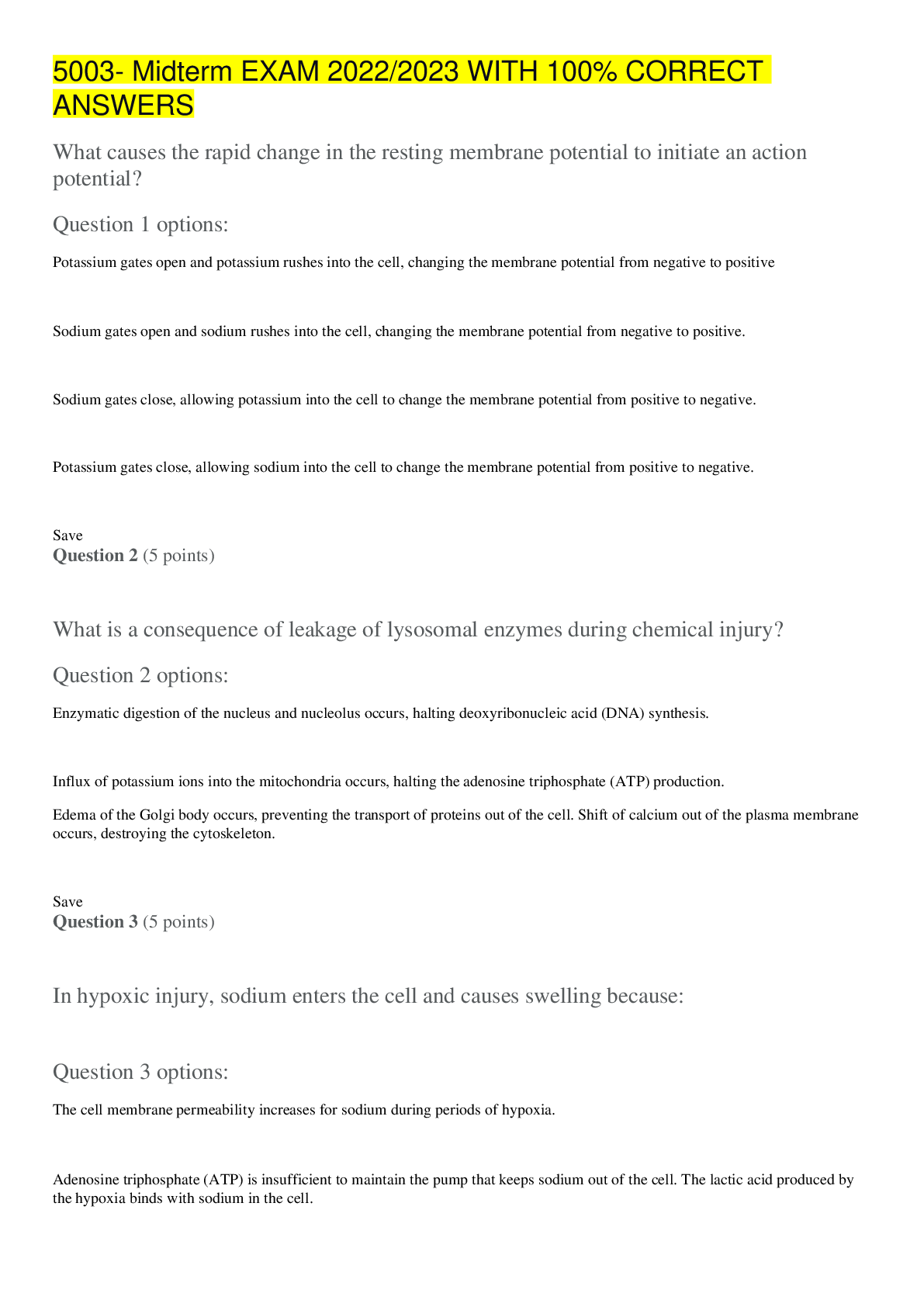
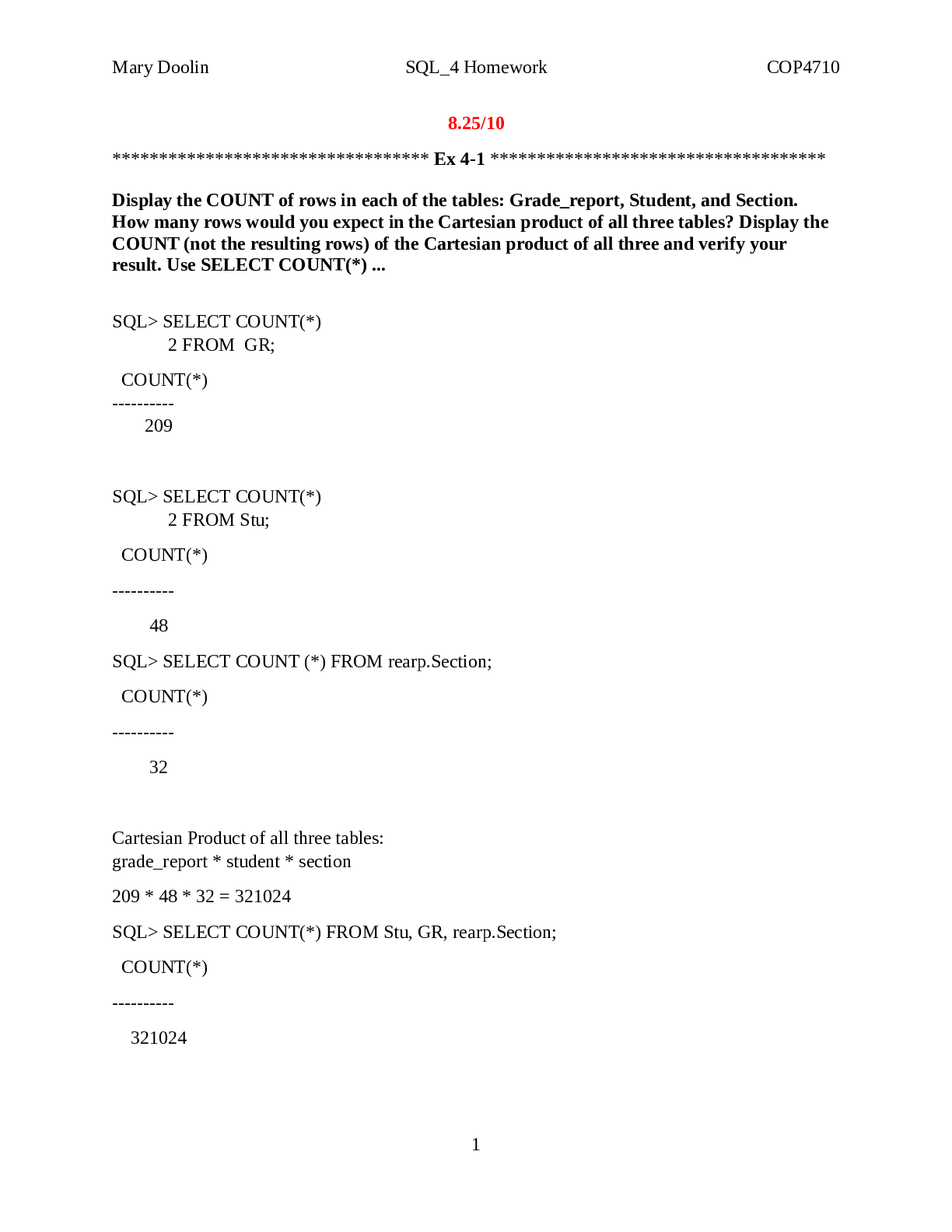
.png)
.png)
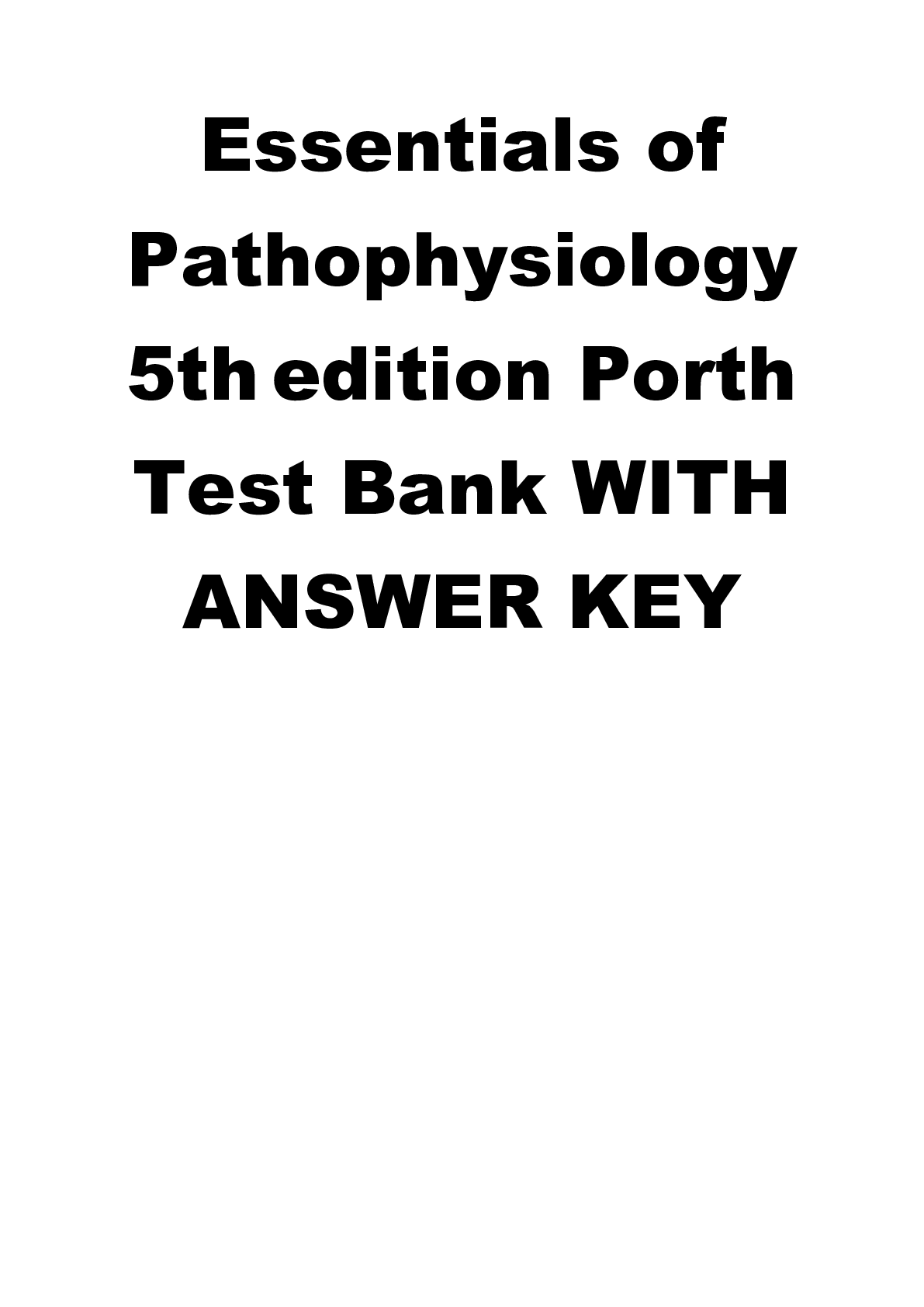
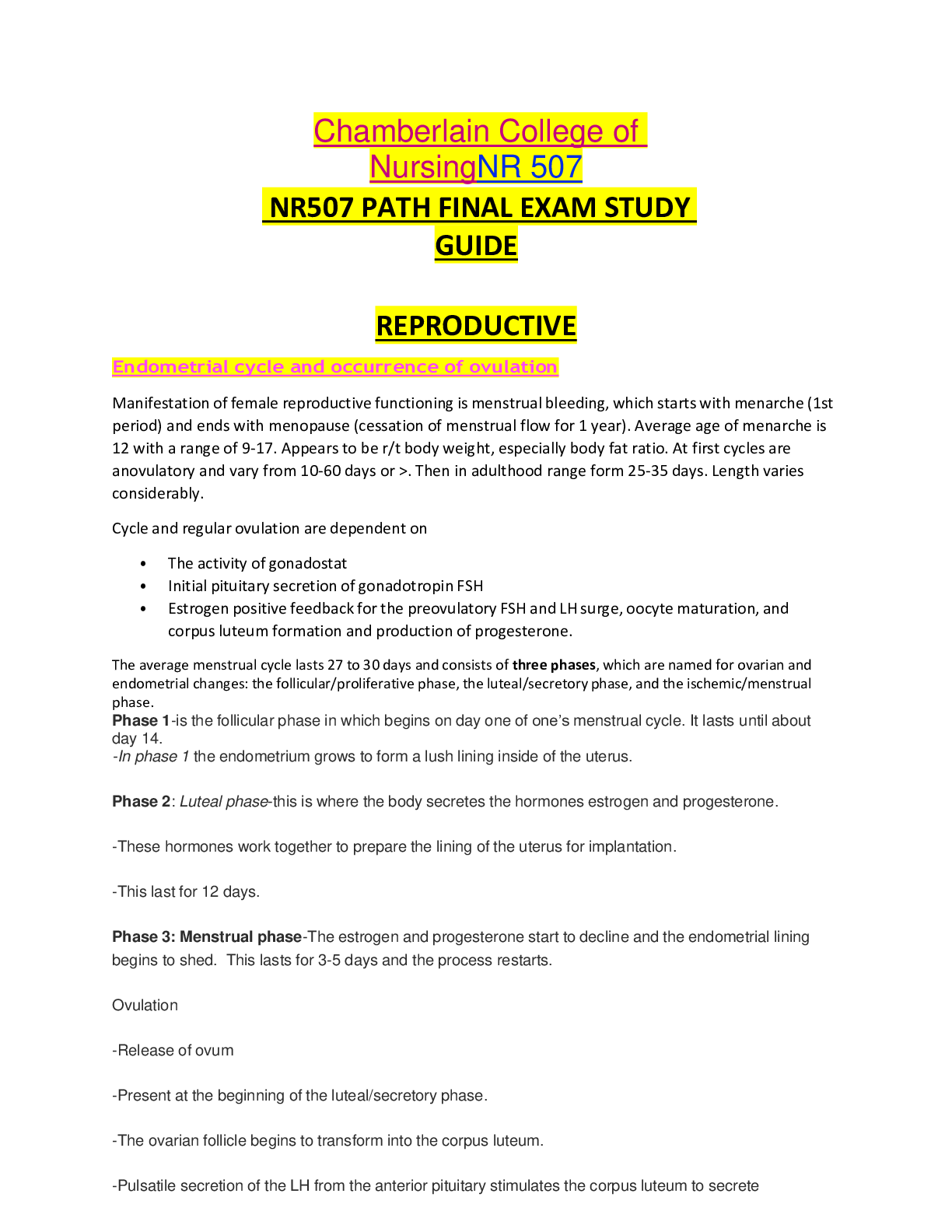
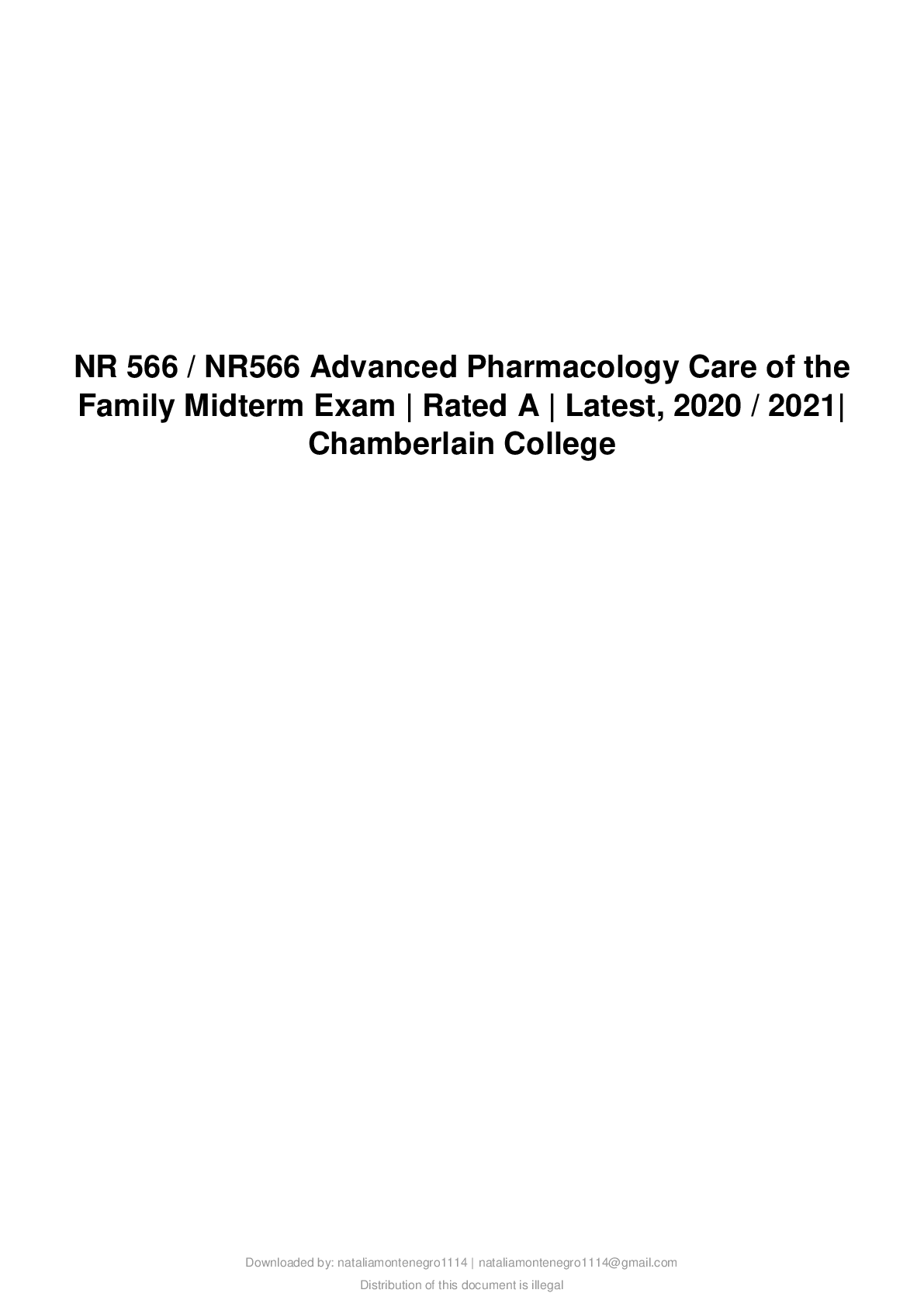
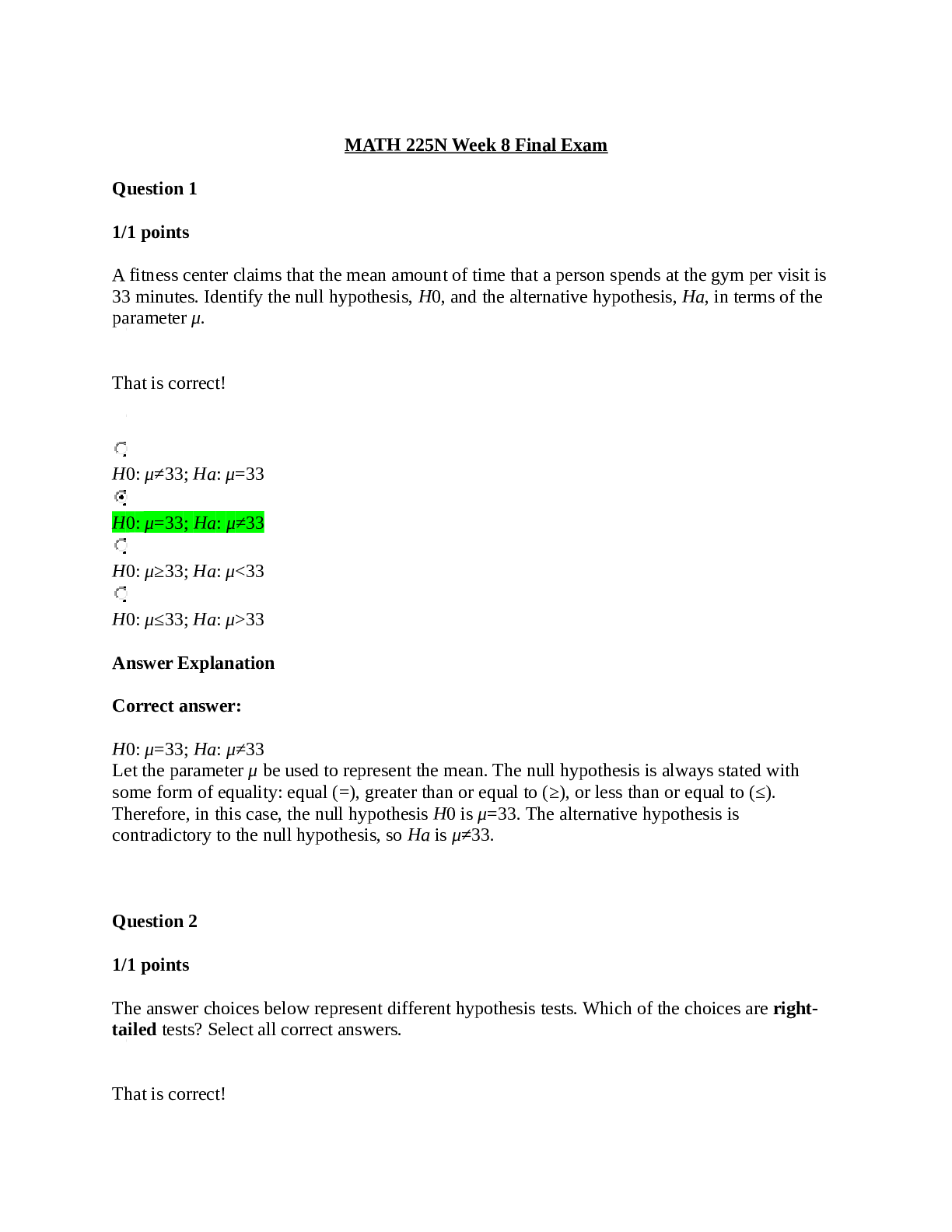

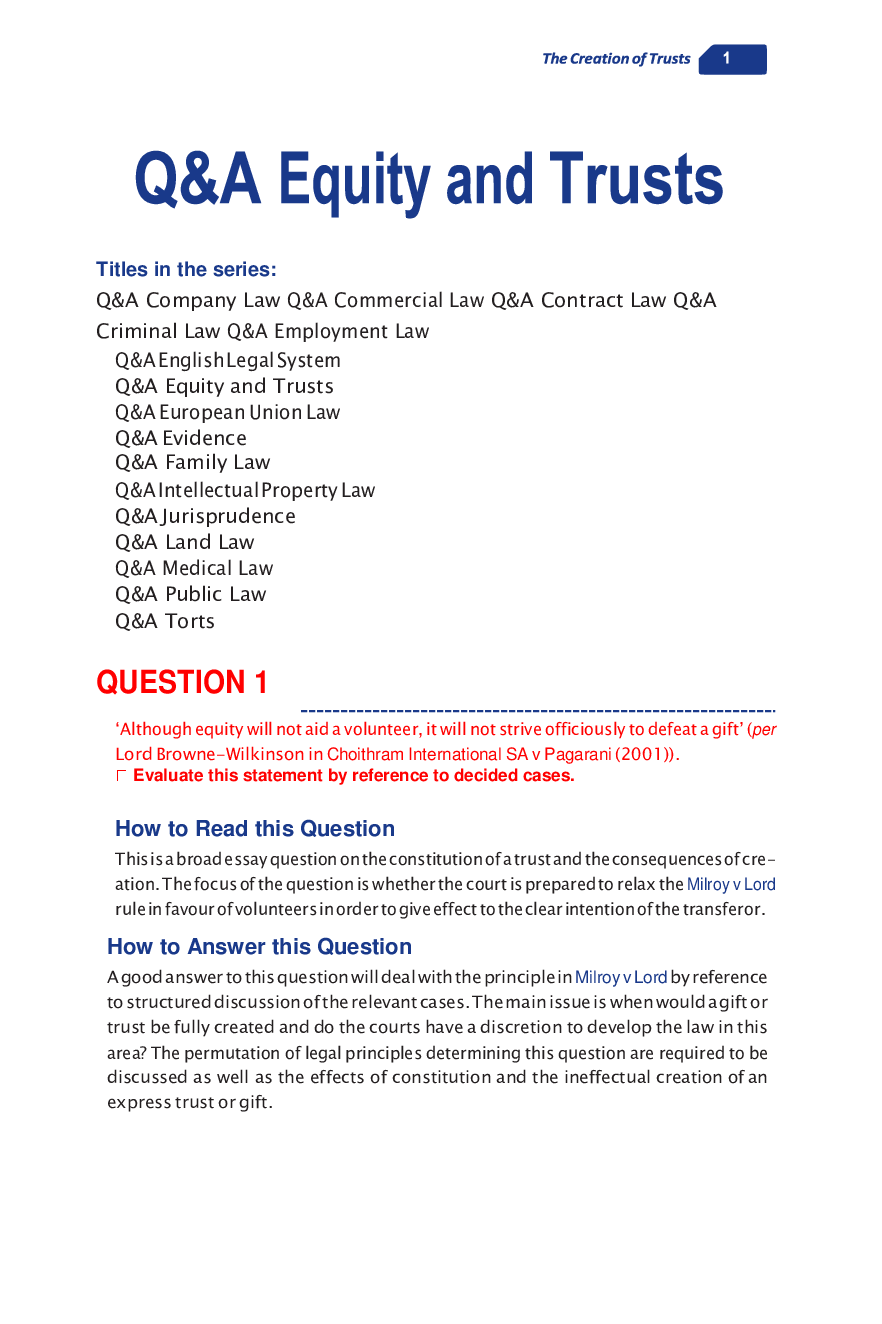
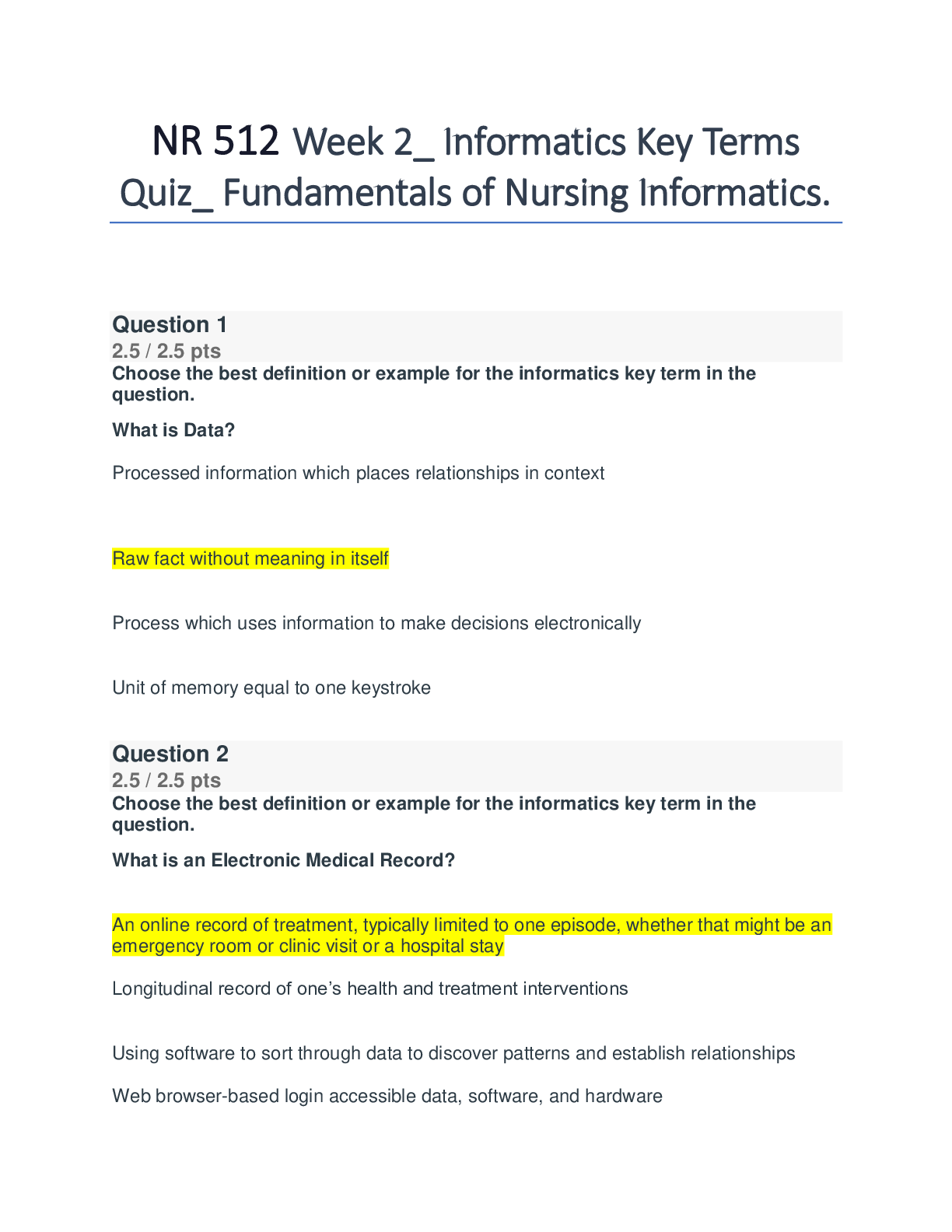
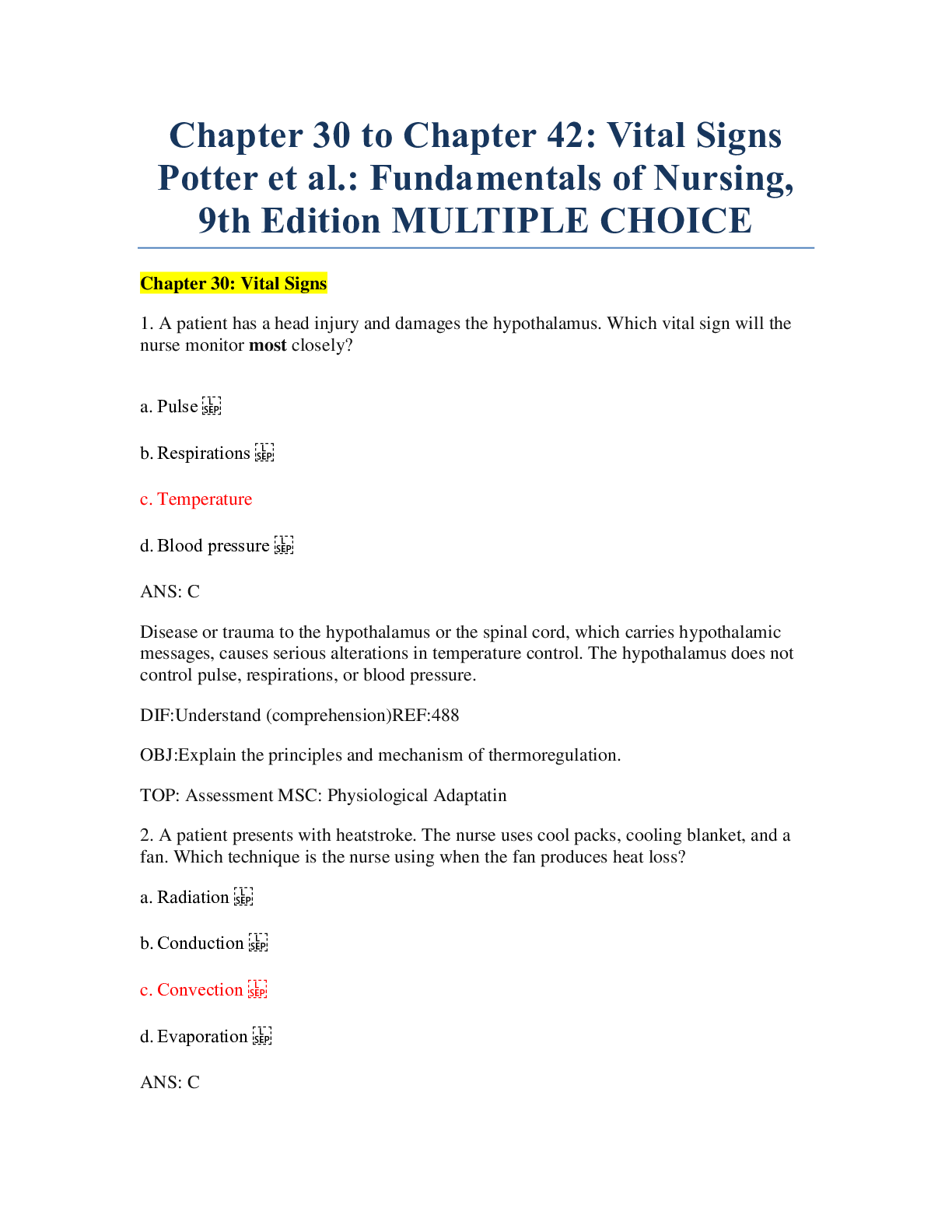
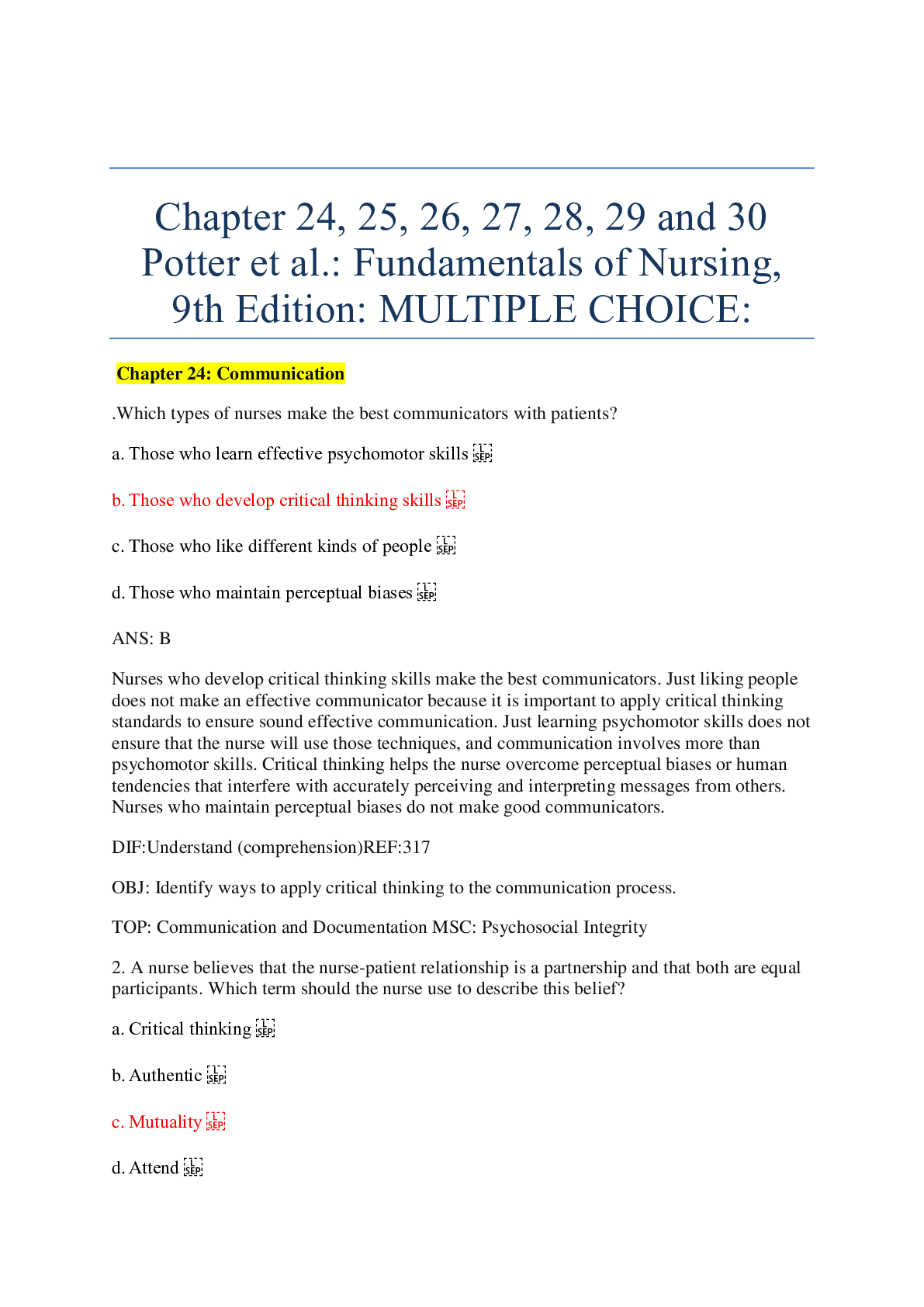
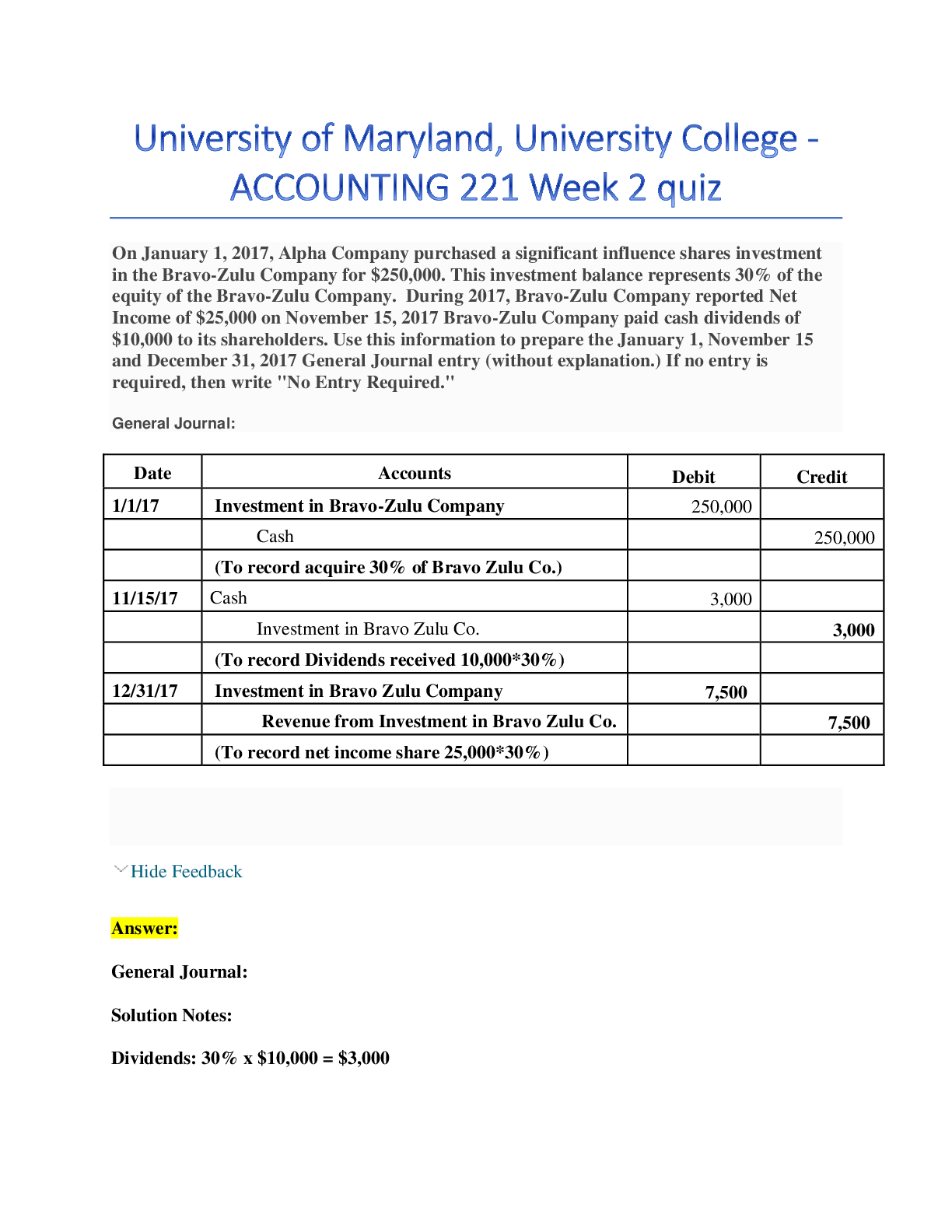

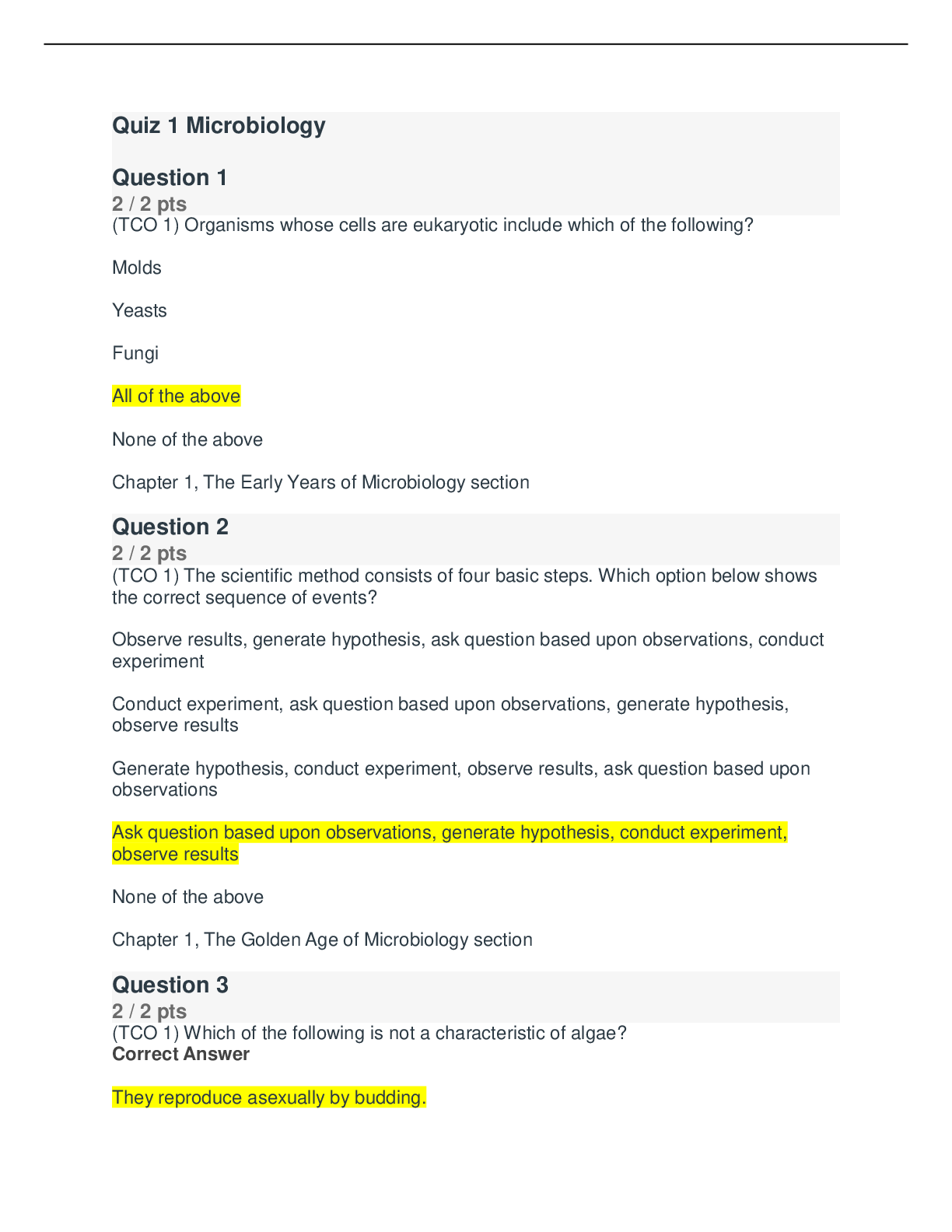
.png)

